
 |
|||
| Sponsors websites: | |||
Artificial turf is an alternative to concrete not grass.By Todd Layt Maintaining plastic turf, when to use artificial turf, and the true benefits of real lawn. When you investigate the properties, benefits and functionality of plastic turf compared to real grass, you soon realise it cannot replace real lawn, but it is a great alternative to concrete or other hard surfaces. Artificial grass is simply a softer alternative to concrete, allowing a surface to be treated harshly, yet still allow people to play some sports that real grass has trouble coping with. Real grass can cope with a lot, but sometimes it is not the answer, like on Tennis Courts. For most lawn alternative uses, using artificial grass instead of real turf is like having beer with Zero alcohol, being a male without Kahunas, trying to eat plastic fruit rather than real fruit, or using plastic plants in the garden. Apart from tangible benefits of true grass over the plastic stuff, there are the psychological realities. For the maintenance contractor, the more natural turf used in the landscape the better. Mowing and edging grass is the landscape manager’s bread and butter. On this note it is important you know where real lawn should be used and where artificial grass should be used, so you can encourage the appropriate use by your customer. Communicating the benefits of real grass to your customers may provide you with more maintenance work, and it gives your customers a better understanding of all the wonderful benefits of turf. Research has often linked health benefits with natural living parks, consisting of turf and plants. Patients who overlook parks in hospitals recover better, and residents of high rise housing with access to green open spaces are healthier. They have better mental health, immunity to disease, and work more productively. Even a child's behaviour is improved by natural turf and plants. When people live and work next to nature, they are more relaxed, and are less susceptible to high blood pressure, stress and depression. The key word here is nature. Plastic grass is quickly dismissed by the human mind as not real and therefore could never be included in nature. Real turf is a wonderful part of nature. People find the feeling of grass between their toes, or the experience of lying on a soft lawn both relaxing and exhilarating. Real turf is the preferred choice of sportsmen, providing a safer and healthier surface to play sport. However, artificial grass is a good safer alternative surface to concrete or other hard surfaces, particularly when physical activity is involved. Artificial turf still needs some maintenance, and I am sure over the years most Landscape management contractors will be called upon to perform this maintenance. Firstly, it is imperative to remove any surface debris such as leaves, twigs, pebbles, paper and any other waste items on a regular basis. It is a good idea to also occasionally sweep the fibres up to revitalize the appearance of the artificial lawn. Always brush in opposite directions, as continuous brushing in one single direction will produce unacceptable pile lean. On most types of plastic turf, it is important not use any tools that may damage the surface and not to use solvents like acetone or cleaning materials containing alcohol. Check with the manufacturer of the product to see which cleaning fluids can be used on that brand. Stains such as oil and grease should be removed promptly as they become hard to remove if left for a while. Soapy water and scrubbing is one way to remove these stains. Ask the manufacturer what chemicals they suggest. Most manufactures however, mainly say to avoid getting grease, oil and other stains on the surface. For the first few years after artificial turf installation on sporting facilities, particularly indoors, static control is a problem that requires a spray of diluted fabric softener. "It also takes away the old tire smell," Fouty said. "Without the fabric softener, our indoor facility smells like old tires and locker rooms." Amy J. Fouty, CSFM, is the athletic turf manager for Michigan State University. She supervises an artificial lawn football practice facility. She claims that it cost about $23 000 per year to maintain the surface suitable for sports use. Outdoors during warmer seasons, you will need to rinse artificial turf with cleaning liquid on a regular basis to maintain shine, then irrigate with water to rinse away the cleaners. This should be done at least once per week, but be careful not to rinse too often as this can cause the fibres to become dry. This helps eliminate the problems that occur to a non cleaned surface. Rain will give a reprieve form doing the weekly cleanse. There is specialist machinery available to clean plastic lawns, so it may be worth investing in that if you clean these surfaces a lot. Maybe after all there is still some substantial work to be had for the lawn maintenance company in looking after artificial lawns. If your clients have any offer to do the work. A well constructed plastic turf surface will provide a safer environment for playing sport, or for underneath playground equipment in parks compared to hard surfaces. I much prefer to play tennis on a good artificial grass court, than on a hard concrete court. The artificial turf can be used indoors where low light precludes the use of real turf, and can be a softer, safer alternative to wood. Many artificial surfaces are portable, and can be moved around venues. Artificial turf can be used around pools and resort areas where wear on turf or low light levels make turf an impossible choice. It can be a great alternative to concrete paths around retirement villages, or parks, as it is a safer alternative to hard concrete. It can be used as play mats for kids, or as temporary matting, or even under a dog kennel. It is a soft alternative to paving, decking or concrete surfaces around houses and buildings for general use, where turf is not an option. As a replacement for real grass, plastic grass does not really cut it, but having said that, there are still many places where artificial turf is an excellent choice. Environmental science can be used to show why natural turf has serious benefits, and that plastic turf is a poor alternative. On a hot day dry artificial turf can be up to 50% hotter than real turf. In one study the temperature on artificial turf reached 78 degrees Celsius, whilst the natural turf was almost 40 degrees cooler, and this was on a day that was 37 degrees Celsius. Recently in Sydney I was involved in a study, which tested over 30 different surfaces on a 40 degree day. A concrete tennis court was 78.27 degrees, whilst an artificial grass tennis court was 66.95, and a nearby turf area was 45.65 degrees. So I guess this shows artificial turf is much cooler than concrete, but real turf is much cooler than the plastic stuff. Other studies have shown natural turf to cool the surrounds of buildings dramatically. An average front house lawn has the cooling effect of 8 ½ horse power worth of air conditioning. Environmentally, real lawns clean runoff water, remove pollutants and heavy metals, and channel the water to recharge our aquifers. Turf also cleans the air. 15 square metres of turf produces enough oxygen for one person. On the other hand, artificial turf is often made from recycled rubber, which frequently contains aluminium, cadmium, chromium, copper, iron, magnesium, manganese, molybdenum, selenium, sulphur and zinc, in addition to lead, that may have been absorbed into the rubber while in use as a car tire. If it is not recycled then it is often made from petroleum products, which the refining of causes huge amounts of pollution. Its life span is limited, so it will need replacing in about a decade. As the artificial fields get older and heat up, tiny fibres dislodge, and can be inhaled by people playing sport, or even lying on the surface. Some, including a USA doctor, are worried this could lead to problems similar to Asbestosis. On artificial turf sports fields, blood, sweat and tissue from someone falling, or dog and bird droppings need to be cleaned up with disinfectant, whilst on real turf, the turf and the beneficial bacteria all around it take care of the problem. In 2003, the Centers for Disease Control (CDC) in the USA conducted a study and found that artificial turf was the cause of several cases of Methicillin-resistant Staphylococcus Aureus (MRSA) in athletes. MRSA is an antibiotic-resistant bacterium that spreads through contact with people and objects. Symptoms of an infection can begin as seemingly innocuous bumps or nicks in the skin, but can quickly spread to the heart, lungs or central nervous system, even capable of causing death. Researchers found that players who sustained turf burns from artificial turf fields were seven times more likely to contract an MRSA infection since these uncovered wounds allowed the bacteria to pass easily among players in close contact. Leaves and sticks need cleaning, as does bird and animal droppings, whereas on real turf the mowing process takes care of this. Cleaning fake turf is not an easy process, and can involve many man hours. Mowing costs more man hours, but the other benefits of turf make up for it. Some new turf varieties like Zoysia types require a third the mowing, which makes their monthly maintenance closer to artificial turf. Artificial turf can suffer from weed invasion just like real turf, although at a lower frequency, as dust and rain allow weed seeds to germinate. At least when real turf is sprayed with Herbicides, the biological processes of turf and soil remove the chemical, while artificial turf allows it to linger. Pests and diseases may not hurt artificial turf, but a good healthy lawn, and the right type of lawn for the region, presents far less of these problems. Real turf acts as a filter for water to be channelled into aquifers, cleaned by filtration on the way. Without these large grassed areas, our ground water supplies and nearby forests that rely on infiltration of nearby turf areas will suffer. Sure, plastic turf may need less water than turf to look good, but plastic turf still needs a little water for cooling and for cleaning. A good well chosen warm season turf, when trained correctly uses about the same water as a native garden. This was confirmed by a study at the University of Western Sydney. Sports fields will need more water due to constant wear, but water can be minimised by best practices. In places like Sydney, and Brisbane, during water restrictions people just let their lawn go brown. When it rained again it came back to life. Good warm season turf grasses do that. Environmentally real grass is a wonderful natural product, which far outshines man made plastic grass in the green stakes. Sure there are a lot of places artificial turf is needed, particularly replacing hard surfaces, but the recent trend to use it in areas such as homes, parks and recently like St Kilda Council on roadsides, supported by better environmental credentials, is based on bad information. One hectare of natural turf can strip 2 to 3 tonne of carbon per hectare per year from the atmosphere. The manufacturing of plastic grass produces carbon, but takes none from the atmosphere. Keep the dream alive, keep our industry alive, and sing the praises of real lawn. |
||||||
 |
||||||
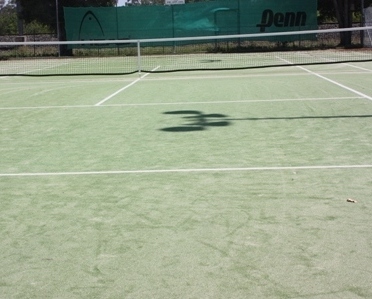 |
||||||
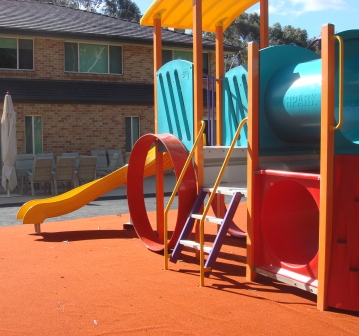 |
||||||
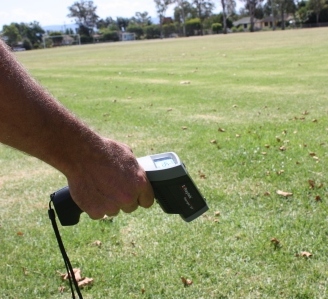 |
||||||
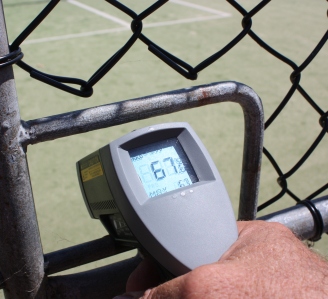 |
||||||
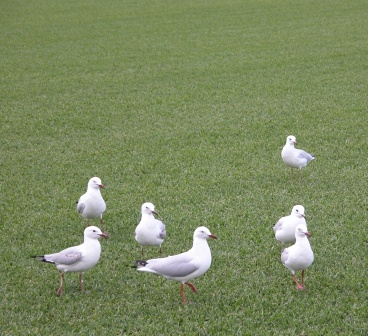 |
||||||